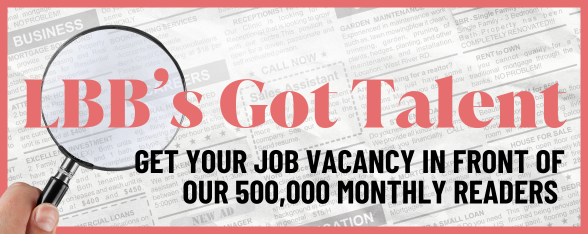
Katie Barclay Explains Why Magnum & Co Has Relaunched as Hopeful Monsters

Left to right: Alycia Raco, Katie Barclay, and Carl Moggridge
Today, Magnum & Co has relaunched as Hopeful Monsters, an independent creative communications agency for brands on a mission, with Katie Barclay, Carl Moggridge and Alycia Raco at the helm.
A challenger agency for challenger-minded brands, Hopeful Monsters has been founded to help brands lead and influence culture.
“Since acquiring Magnum in late 2021, a lot has changed in the business, but also the industry more broadly,” says owner & CEO, Katie Barclay.
“The type of work we’re being asked to do is different, the type of agency talent that want to work here is different, and the type of campaigns we’re creating have an exciting new direction to them.
“Of course, I’m proud of what we’ve achieved in the last 18 years, but we believe the next 18 can be bigger and better. For that to happen, we needed a genuine agency brand with bolder ambitions and a much clearer statement of intent. It’s not the usual agency nip and tuck rebrand. We wanted to create a brand that’s genuinely different and means as much internally to our people as it does externally.”
We spoke to Katie about her team's new mission.
LBB> What does 'culture' mean to you?
Katie> We take a more academic view of culture and define it as the shared values, attitudes and behaviour of a group of people. In our opinion, there is no force on human behaviour bigger than culture, even Byron Sharp. And when a brand affects the culture of a category, there’s a big commercial upside.
So when we say ‘culture is serious business’ this is what we specialise in. It’s about making a genuine business case for it, based on evidence, creativity and a growing body of work. It isn’t Gen Z suffer from #FOMO.
LBB> Why the decision to rebrand rather than simply further incorporate this 'culture-first' model into Magnum&Co?
Katie> Relaunching the agency wasn’t a decision we took lightly. But over the last 12 months, a lot has changed in the business and the industry more broadly. The type of work we’re being asked to do is different, the type of talent that want to work here is different, and the type of campaigns we’re creating have an exciting new direction to them.
It didn’t make sense to just fold our culture-first positioning into our existing agency. To do the type of work we want to do, we needed a genuine agency brand with bolder ambitions and a much clearer statement of intent. It wasn’t about the usual agency nip and tuck rebrand. We wanted to create a brand that’s genuinely different and means as much internally to our people as it does externally.
LBB> Could you share anything more with us about Hopeful Monsters' culture strategy in the coming months?
Katie> Ultimately, the industry spends a disproportionate amount of time trying to understand absolutely anything and everything, apart from real people. I read a ridiculous statistic the other day that even the majority of qualitative research is now online. Our cultural strategy methods are about putting some soul back into the hyper rationalised way we do things in our industry. Combining marketing fundamentals like good objectives and a problem, with a deep understanding of what people do, not what they say they do.
Not only is this proving to be more effective and efficient, there is a wide body of research that suggests brands that lead the culture of a category outperform the competition.
Alycia Raco, strategy director says: “What excites me the most about Hopeful Monsters is that we have to put our money where our mouth is. It isn’t a wallflower position. We’ve already assembled a cultural strategy and research team where everyone is trained and qualified to actually do it.
“At the end of the day, people don’t spend much time thinking about brands. They care about themselves and their own problems. Our commitment to starting here grounds our work in the real world and with real people.”
Barclay adds: “I’m in awe of what the team has achieved in the last 12 months to get us to this point, as well as our clients that have supported us. We’ve grown more in the last year than we have in the previous 18. It won’t always be easy, but we’re all 100% committed to the mission.
“And we’re well on our way. Doing influential work for a lot of influential brands, with clients and talent that epitomise what it is to be a Hopeful Monster.
“Take Converse. Our work with Converse globally has been recognised by Fast Company in their Top Ten Most Innovative brands in the world and led to them being the fastest growing brand with young people. That’s Hopeful Monster behaviour.”
So what’s in the name? Moggridge adds: “It’s inspired by some controversial science. Most species evolve painstakingly slowly over thousands of years. However, every now and then a rare few make a giant leap that changes the lineage of a species forever. It’s called a Hopeful Monster. We're here to help brands make this type of change in their category and in our own.”
The Hopeful Monsters portfolio of clients includes Converse, Red Bull, Adobe, Resmed, Noom, Goodman Fielder, RSPCA NSW, Pizza Hut and Atlantis Dubai.















